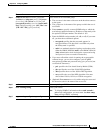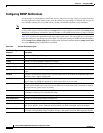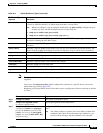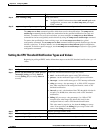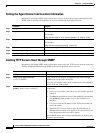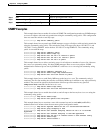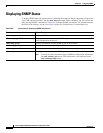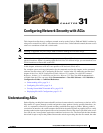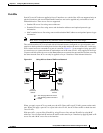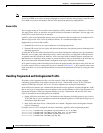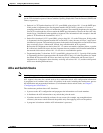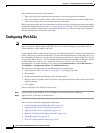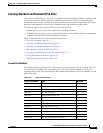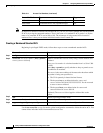
CHAPTER
31-1
Catalyst 2960 and 2960-S Switch Software Configuration Guide
OL-8603-09
31
Configuring Network Security with ACLs
This chapter describes how to configure network security on the Catalyst 2960 and 2960-S switches by
using access control lists (ACLs), also referred to as access lists. Unless otherwise noted, the term switch
refers to a standalone switch and a switch stack.
Note Stacking is supported only on Catalyst 2960-S switches running the LAN base image.
Note If the switch is running the LAN Lite image, you can configure ACLs, but you cannot attach them to
physical interfaces. When it is running either the LAN Lite or LAN base image, you can attach ACLs to
VLAN interfaces to filter traffic to the CPU.
In this chapter, references to IP ACLs are specific to IP Version 4 (IPv4) ACLs.
For complete syntax and usage information for the commands used in this chapter, see the command
reference for this release, the “Configuring IP Services” section in the “IP Addressing and Services”
chapter of the Cisco IOS IP Configuration Guide, Release 12.2, and the Cisco IOS IP Command
Reference, Volume 1 of 3: Addressing and Services, Release 12.2. The Cisco IOS documentation is
available from the Cisco.com page under Documentation > Cisco IOS Software > 12.2 Mainline >
Configuration Guides or Command References.
• Understanding ACLs, page 31-1
• Configuring IPv4 ACLs, page 31-6
• Creating Named MAC Extended ACLs, page 31-22
• Displaying IPv4 ACL Configuration, page 31-24
Understanding ACLs
Packet filtering can help limit network traffic and restrict network use by certain users or devices. ACLs
filter traffic as it passes through a switch and permit or deny packets crossing specified interfaces. An
ACL is a sequential collection of permit and deny conditions that apply to packets. When a packet is
received on an interface, the switch compares the fields in the packet against any applied ACLs to verify
that the packet has the required permissions to be forwarded, based on the criteria specified in the access
lists. One by one, it tests packets against the conditions in an access list. The first match decides whether
the switch accepts or rejects the packets. Because the switch stops testing after the first match, the order



